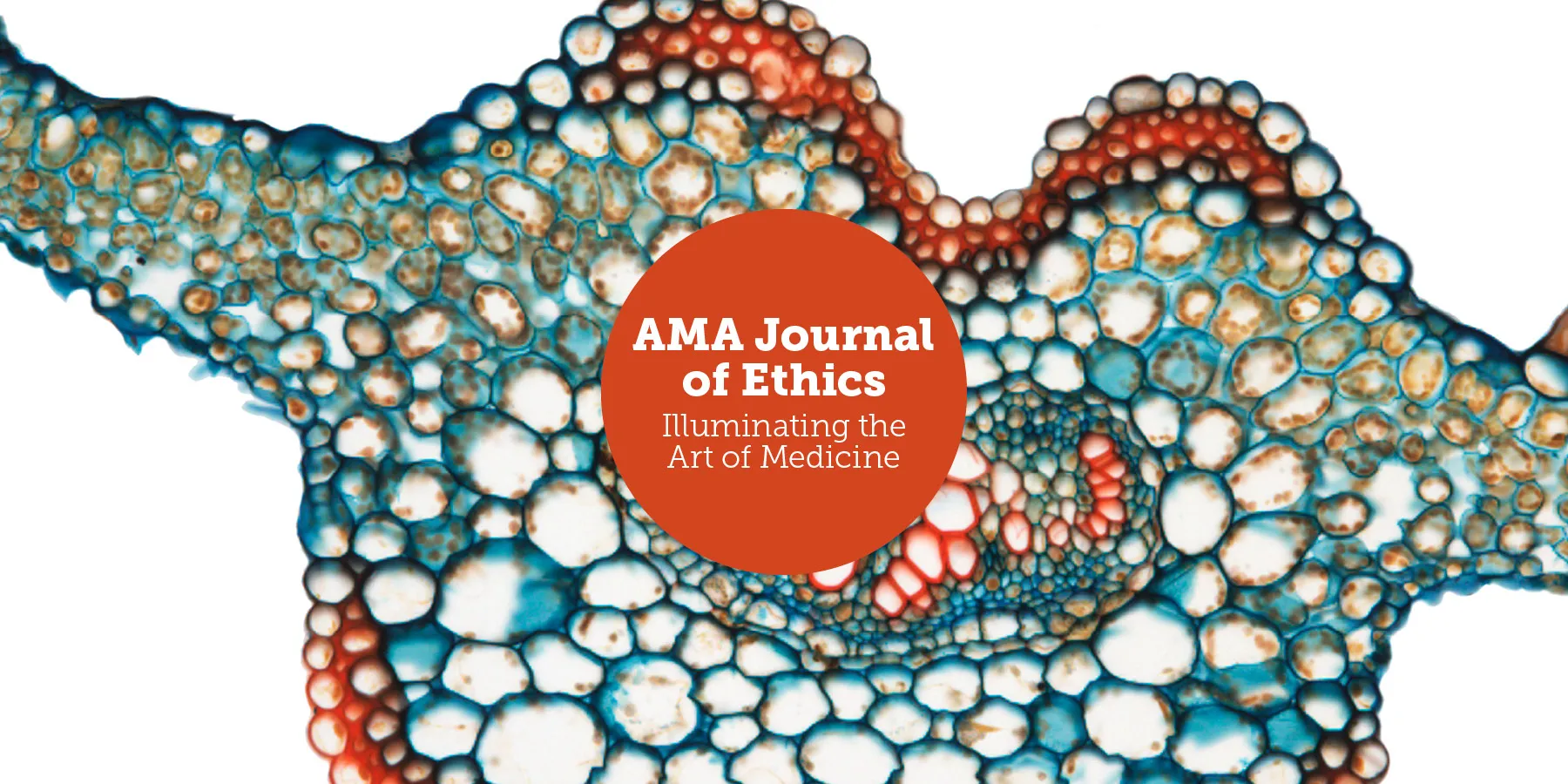As Chloë Atkins and Sunit Das write in “What Should Clinicians and Patients Know About the Clinical Gaze, Disability, and Iatrogenic Harm When Making Decisions?,” medical care provided for patients with disabilities is imbricated with the “medical gaze,” a lens of presumed objectivity of medical knowledge and clinicians and of the depersonalization of evidence-based medicine—both of which are normative and potentially stigmatizing and fail to consider the experience of disability embodied by patients. Consequently, patients with disabilities might feel their sense of autonomy, self-determination, and control over their care diminished by how values such as beneficence, nonmaleficence, and justice are endorsed by clinicians in practice.
Atkins and Das suggest the inclusion of critical disability ethics and ableism studies in clinical education, which might help to foster more culturally and ethically sensitive care by health care professionals.1,2,3,4 Nevertheless, unsaid is that patients with disabilities sometimes may not agree with, trust, or feel comfortable with care from clinicians without disabilities.5 In a patient-centered approach, responsibility for directly integrating the embodied experiences of disability in clinical care can be enacted by many and especially by health care professionals with disabilities. Patient satisfaction and compliance result when life experiences of clinicians closely match those of patients.6 Additionally, health care professionals with disabilities may contribute to colleagues’ learning experiences of disability, thereby increasing the sensitivity of colleagues without disabilities.5
Thus, diversification of student bodies in health professions schools and increasing numbers of health care professionals with disabilities might improve care and outcomes of patients with disabilities. Although over a quarter of US adults live with a disability, studies suggest a disability prevalence of 3.1% and 4.6% among physicians and medical students, respectively.7,8,9 While the proportion of clinicians with disabilities is projected to increase, disparity and inequity in representation of disability in the US health care workforce still exists.10 Contributing factors include misperceptions of medical school or residency program applicants with disabilities as less “fit” or competent, which controverts long-standing recognition that health care professionals with disabilities make key contributions to the health professions.9
Meeting the medical needs of a population requires discernment and warrants accurate representation of members of the population in the workforce that provides the care to that population.10
References
- Eddey GE, Robey KL. Considering the culture of disability in cultural competence education. Acad Med. 2005;80(7):706-712.
- Huang H, Ding Y, Wang H, Khoshnood K, Yang M. The ethical sensitivity of health care professionals who care for patients living with HIV infection in Hunan, China: a qualitative study. J Assoc Nurses AIDS Care. 2018;29(2):266-274.
- Shakespeare T, Kleine I. Educating health professionals about disability: a review of interventions. Health Soc Care Educ. 2013;2(2):20-37.
- Weaver K, Morse J, Mitcham C. Ethical sensitivity in professional practice: concept analysis. J Adv Nurs. 2008;62(5):607-618.
- Meeks LM, Poullos P, Swenor BK. Creative approaches to the inclusion of medical students with disabilities. AEM Educ Train. 2019;4(3):292-297.
-
Meeks LM, Jain NR. Accessibility, Inclusion, and Action in Medical Education: Lived Experiences of Learners and Physicians With Disabilities. Association of American Medical Colleges; 2018. Accessed September 22, 2022. https://sds.ucsf.edu/sites/g/files/tkssra2986/f/aamc-ucsf-disability-special-report-accessible.pdf
- Meeks LM, Case B, Herzer K, Plegue M, Swenor BK. Change in prevalence of disabilities and accommodation practices among US medical schools, 2016 vs 2019. JAMA. 2019;322(20):2022-2024.
-
Nouri Z, Dill MJ, Conrad SS, Moreland CJ, Meeks LM. Estimated prevalence of US physicians with disabilities. JAMA Netw Open. 2021;4(3):e211254.
- Okoro CA, Hollis ND, Cyrus AC, Griffin-Blake S. Prevalence of disabilities and health care access by disability status and type among adults—United States, 2016. MMWR Morb Mortal Wkly Rep. 2018;67(32):882-887.
- Schwarz CM, Zetkulic M. You belong in the room: addressing the underrepresentation of physicians with physical disabilities. Acad Med. 2019;94(1):17-19.




